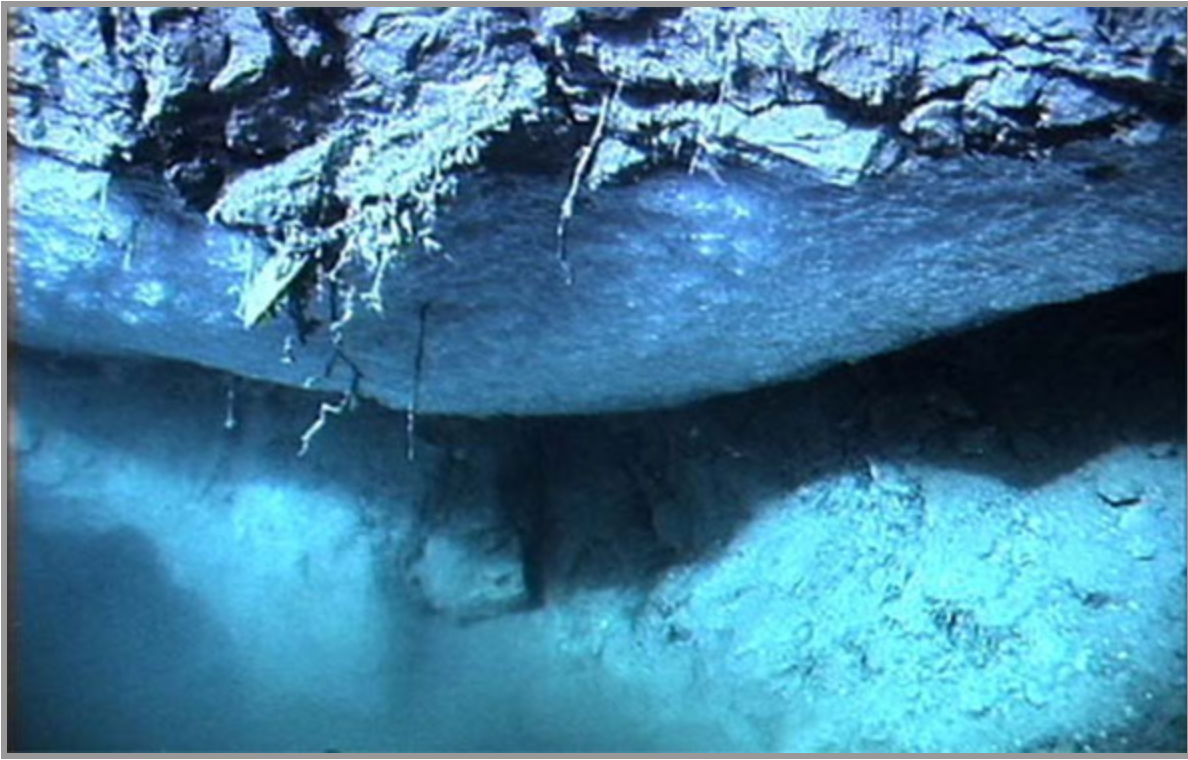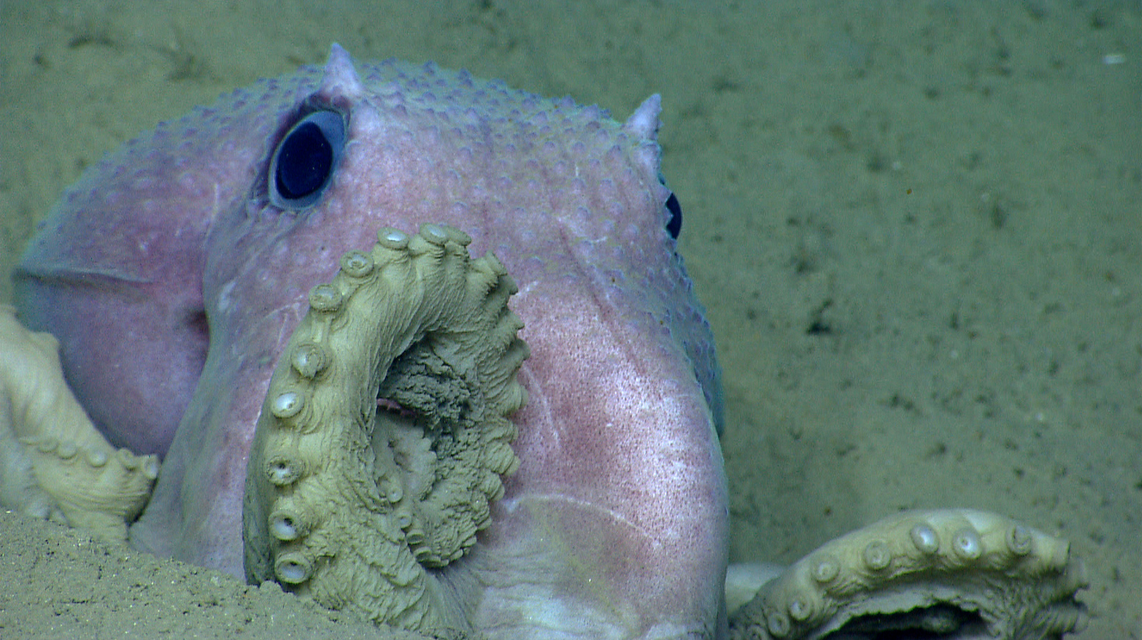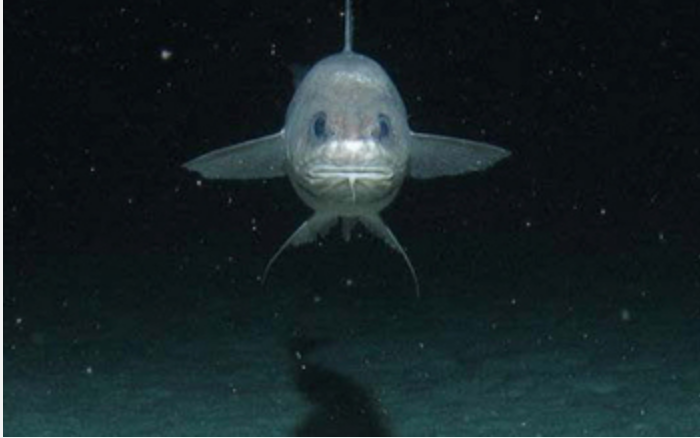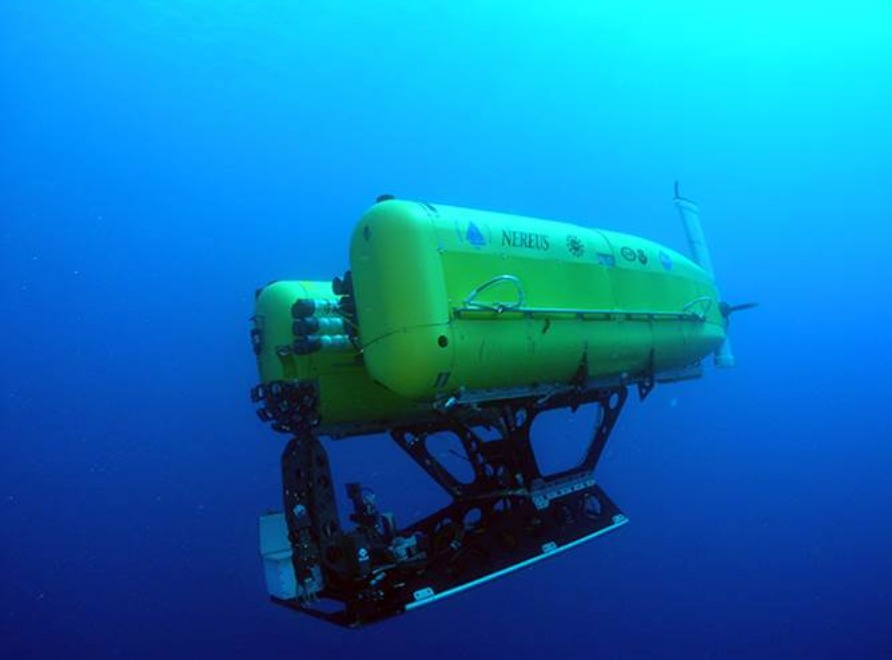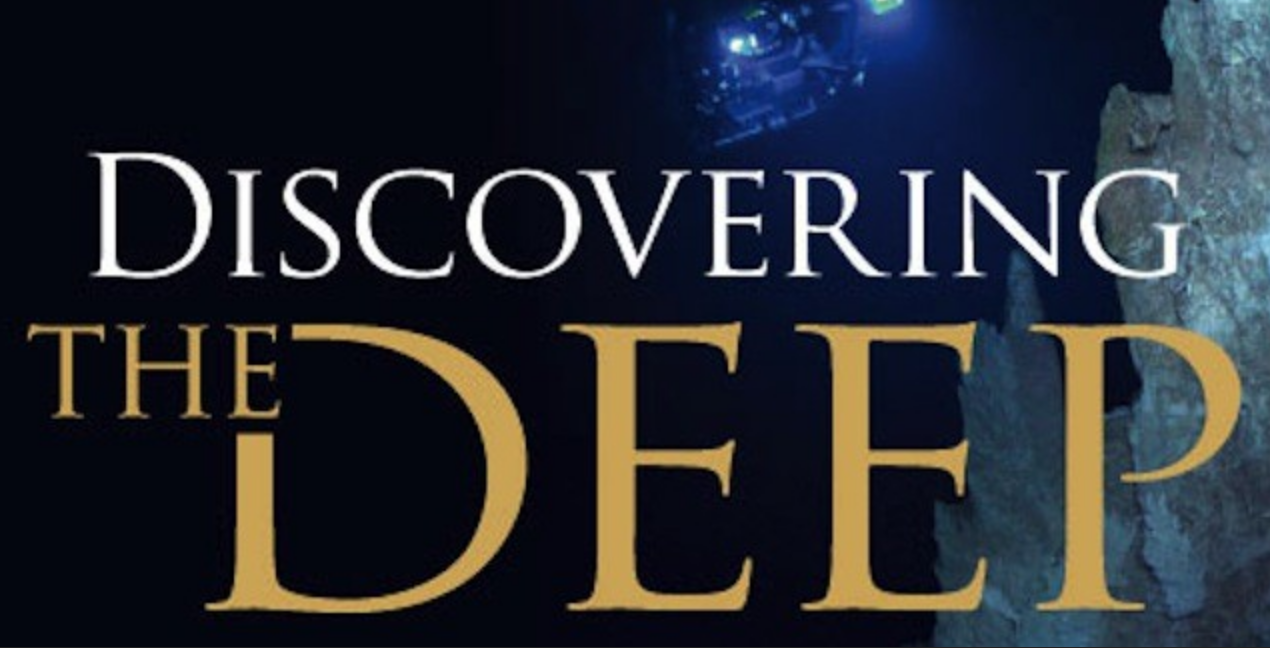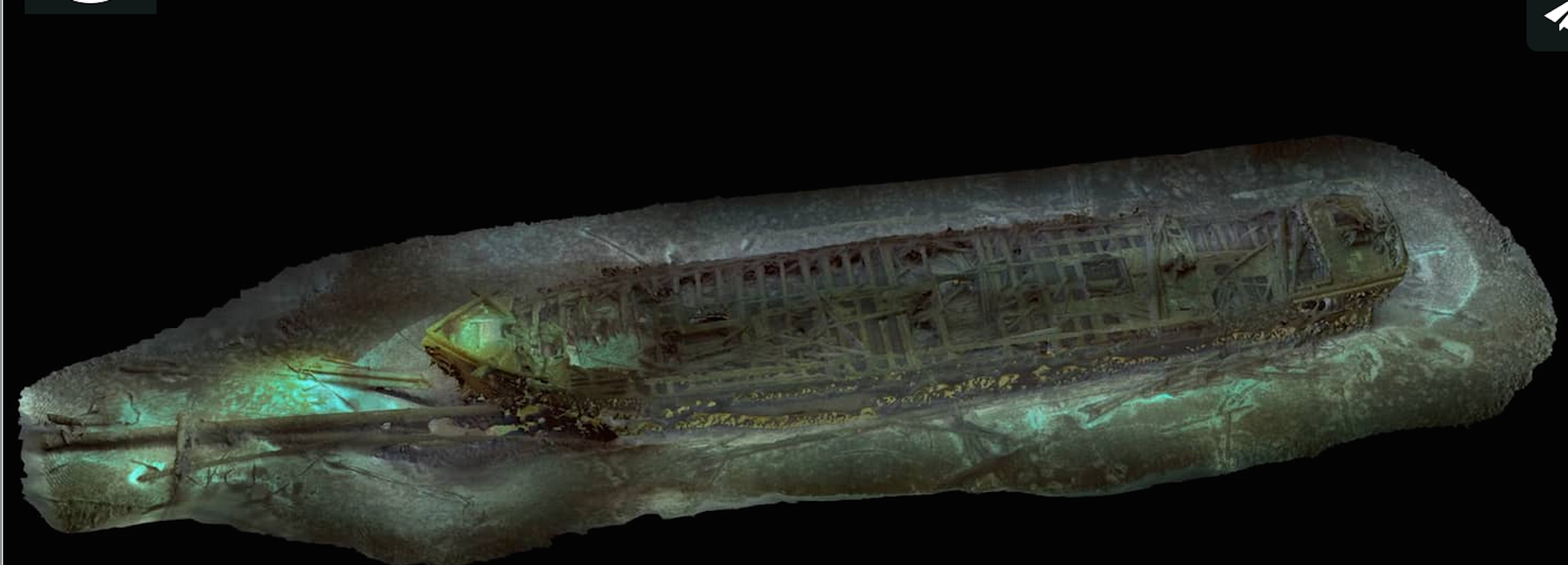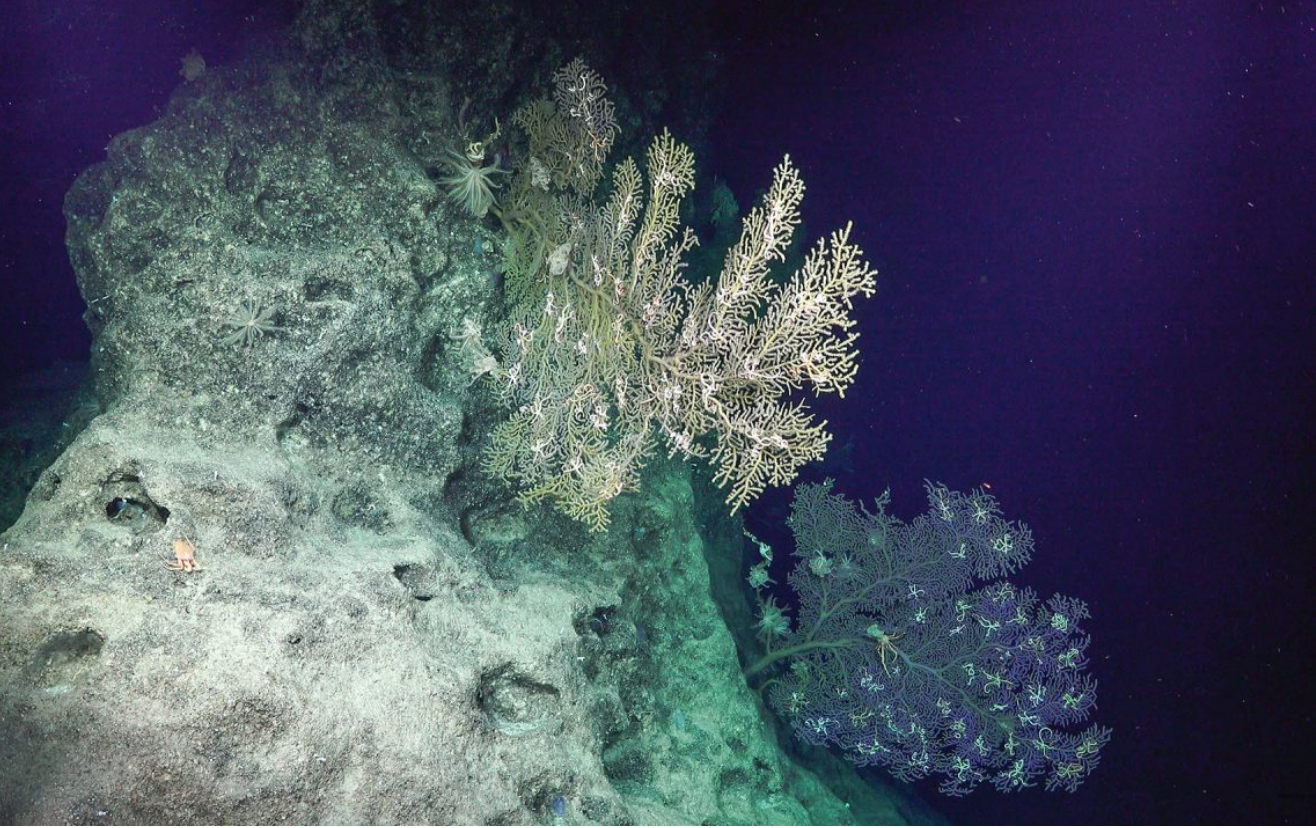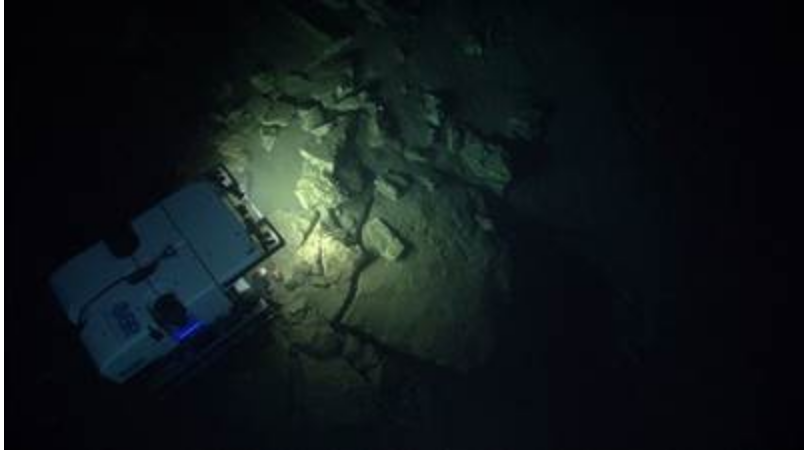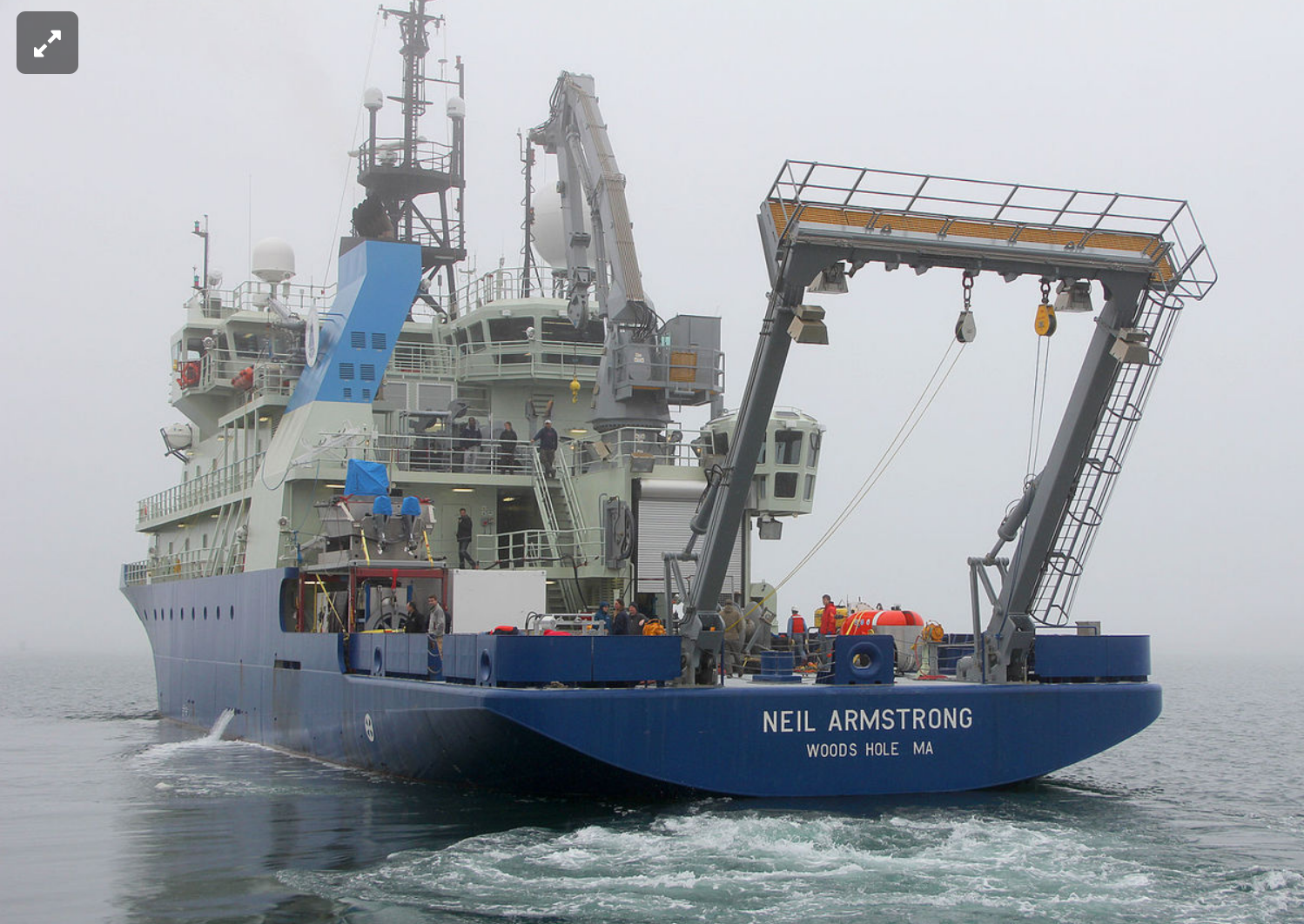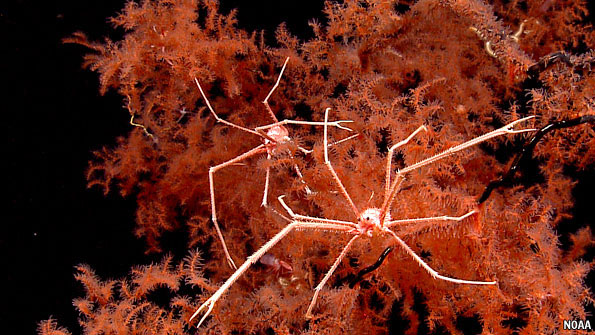News
The continental shelf and slope off the northeastern U.S., the underwater edge of the continent that borders the Atlantic Ocean basin, hosts an incredible diversity of habitats including approximately 70 submarine canyons ranging from depths of approximately 100 meters to 3,500 meters, etched by rivers thousands of years ago when this region was above sea level.
Last month, while traveling around Puerto Rico and the U.S. Virgin Islands, the NOAA ship spotted 100 different species of fish, along with 50 different species of coral and hundreds of other invertebrates. One fish species is so new it’s never been named; another jellyfish-like creature called a ctenophore or comb jelly, has only been observed once before.
What lives in the deepest part of the ocean–the abyss?
A team of researchers funded by the National Science Foundation (NSF) will use the world’s only full-ocean-depth, hybrid, remotely-operated vehicle, Nereus, and other advanced technology to find out. They will explore the Kermadec Trench at the bottom of the Pacific Ocean.
An international team of researchers led by deep-sea biologist Tim Shank of the Woods Hole Oceanographic Institution (WHOI) will use the world’s only full-ocean depth, hybrid remotely operated vehicle, Nereus and other advanced technology to explore life in the depths of the Kermadec Trench.
WHOI scientists Daniel Fornari and Timothy Shank and their colleagues Jeff Karson (Syracuse Univ.), Deborah Kelley (U. Washington) and Michael Perfit (U. Florida) bring their deep-sea explorations to the public with an extraordinary new book, “Discovering the Deep: A Photographic Atlas of the Sea-Floor and Ocean Crust.
The Advanced Imaging and Visualization Laboratory (AIVL) at the Woods Hole Oceanographic Institution (WHOI) working with Marine Imaging Technologies has developed a revolutionary new multi-function, underwater imaging system capable of generating ultra-high definition television (UHDTV) video, 2-D mosaic imaging, and 3-D optical models of seafloor objects and environments. The new state-of-the-art technology is currently being field-tested on several submerged shipwreck sites in both the U.S. and Europe.
APIA, SAMOA – Seventeen underwater robotic dives have been made using ROV SuBastian, completing the first expedition of the islands and eastern seamounts of the Phoenix Islands Protected Area (PIPA) in the nation of Kiribati. This follows an initial exploration of the western seamounts by the NOAA Ship Okeanos Explorer. “This journey was in the tradition of the grand research expeditions of the past,” said Chief Scientist Dr. Erik Cordes from Temple University. “We traveled nearly 3,000 miles across the Pacific Ocean and explored a part of the world that has remained entirely hidden from view until now.”
Ocean explorers in July on NOAA Ship Okeanos Explorer discovered a wide diversity of seafloor features and communities of life in the largely unexplored deep-sea canyons off the northeast U.S. coast. Now through August 16, as the expedition continues, the public can join the mission as “citizen scientists,” at oceanexplorer.noaa.gov/okeanos, to see live seafloor video and listen as scientists discuss their observations in real time. During the expedition’s July leg, there were nearly 60,000 visits to the live streaming video.
R/V Neil Armstrong left Woods Hole at 1 PM Monday, May 2, on a science verification expedition to test the University of Connecticut’s remotely operated vehicle (ROV) Kraken2 and the hybrid ROV Nereid Under-Ice.
TOWARDS the end of June, a unique joint expedition began in the waters near Indonesia. In an area of remarkable marine diversity known as the “Coral Triangle”, two vessels set sail: the American Okeanos Explorer and the Indonesian Baruna Jaya IV. Their destination was not over the horizon, but to explore the depths of the ocean.
Jane Lubchenco, administrator of America’s National Oceanic and Atmospheric Administration, says this is the first time that scientists have used a remotely operated vehicle to investigate the cold depths of Indonesia’s Sangihe Talaud region. Their remotely operated vehicle, known as Little Hercules, is working in waters as deep as 3,700 metres (2.3 miles) and as shallow as 250 metres.
- « Previous
- 1
- 2
- 3
- 4
- Next »

